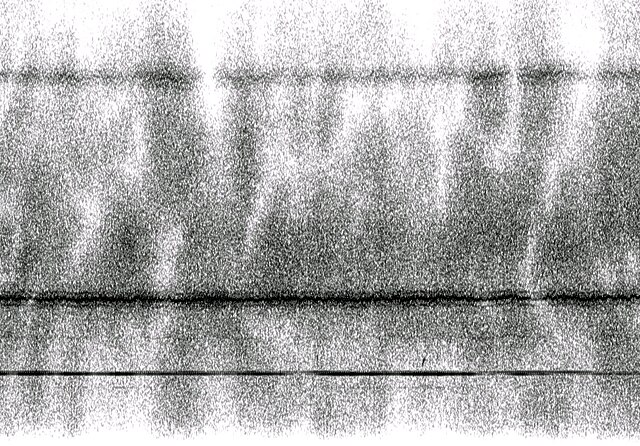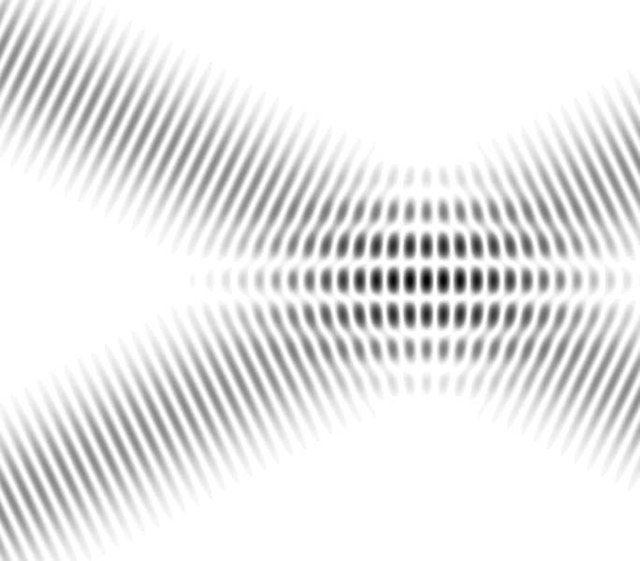In wireless communications, fading refers to the variation of signal attenuation over variables like time, geographical position, and radio frequency. Fading is often modeled as a random process. In wireless systems, fading may either be due to multipath propagation, referred to as multipath-induced fading, weather, or shadowing from obstacles affecting the wave propagation, sometimes referred to as shadow fading.
Frequency-selective time-varying fading causes a cloudy pattern to appear on a spectrogram. Time is shown on the horizontal axis, frequency on the vertical axis and signal strength as grey-scale intensity.
In physics, interference is a phenomenon in which two coherent waves are combined by adding their intensities or displacements with due consideration for their phase difference. The resultant wave may have greater intensity or lower amplitude if the two waves are in phase or out of phase, respectively.
Interference effects can be observed with all types of waves, for example, light, radio, acoustic, surface water waves, gravity waves, or matter waves as well as in loudspeakers as electrical waves.
Photograph of 1.5cm x 1cm region of soap film under white light. Varying film thickness and viewing geometry determine which colours undergo constructive or destructive interference. Small bubbles significantly affect surrounding film thickness.
Interference fringes in overlapping plane waves
Smartphone with iridescent back panel
An oil spill





